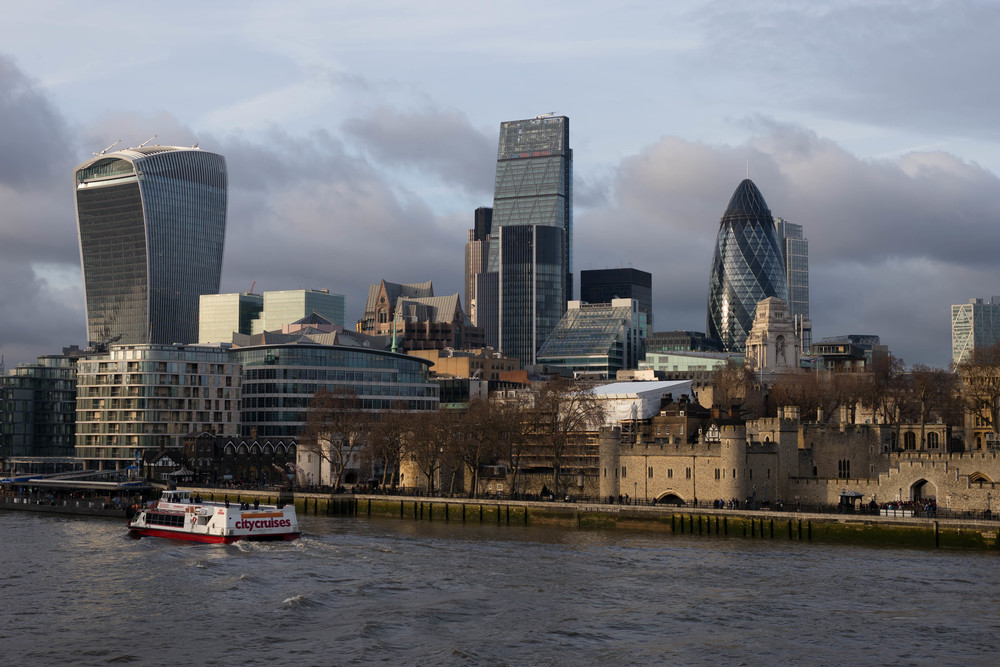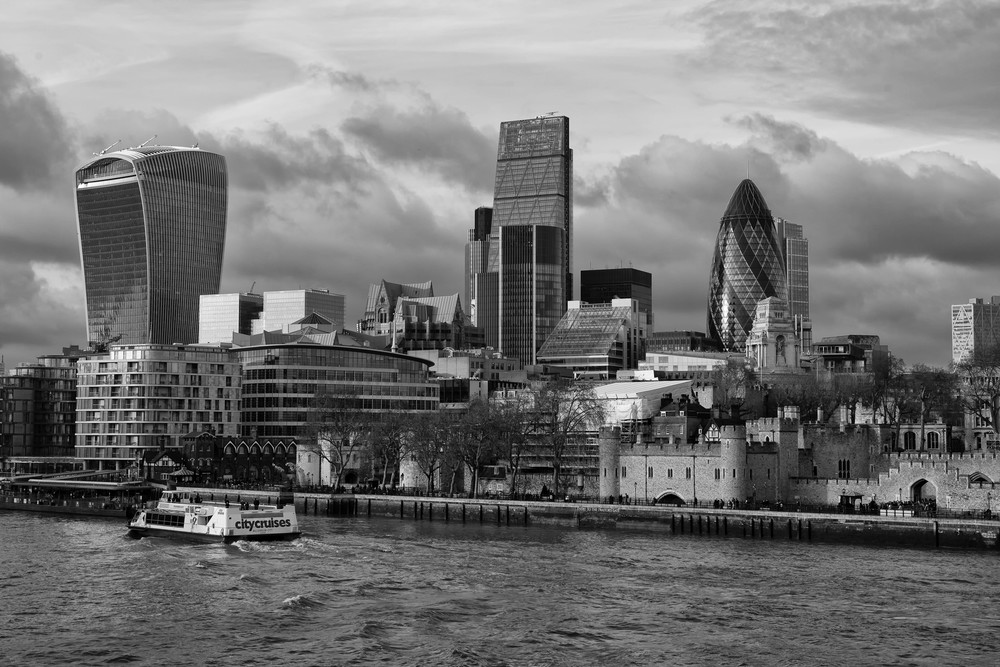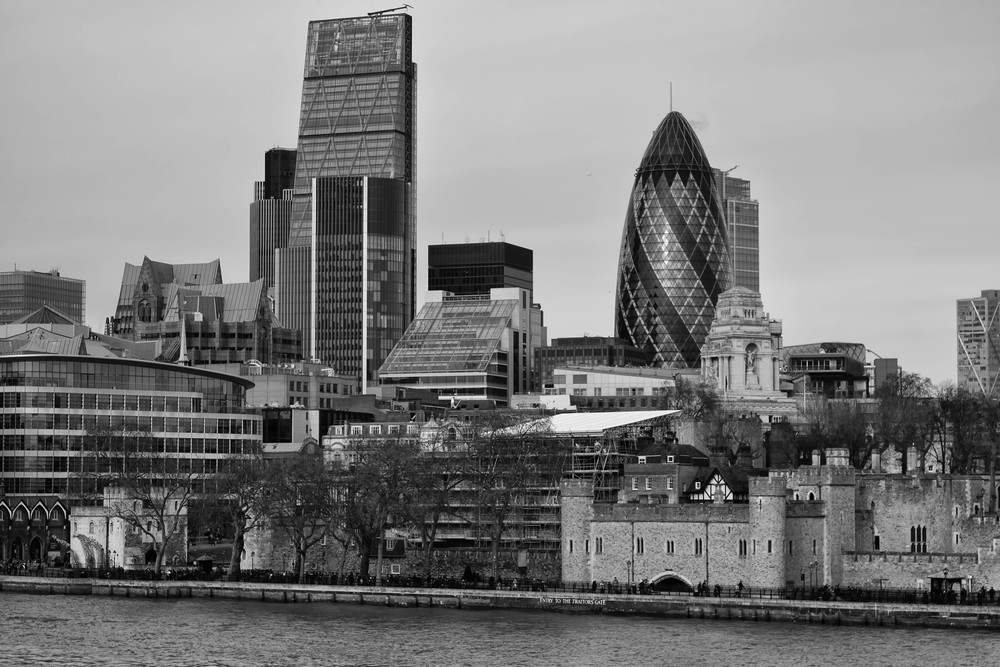
Today I was out with the Leica M-P and the 50mm Apo-Summicron ASPH. It’s the third visit to Tower Bridge to capture the skyline of the City of London from the south side of the river. I have worked with three cameras but just the one lens, Leica’s latest and best fifty. I left the Leica until last but I now do believe the combination of this camera and lens is a marriage made in heaven.

Last week you saw the impressive results from this lens attached to Sony’s new A7 Mark II, the only full-frame mirrorless camera with five-axis stabilisation. This certainly helped in the night shots, but the two unstablised cameras in daylight and at higher speeds appear to have no problems in avoiding shake. Yesterday I published comparative shots from the Fuji X-T1, again with the same lens. The sky was pretty boring for the Fuji yesterday but I had better luck with the Sony and Leica. Incidentally, all these pictures were taken hand-held with nary a tripod in sight.
Of the three, I think I prefer the results from the Leica, both in terms of colour rendition and in the clarity and depth of the Silver Efex Pro monochrom conversions. In fact, I do not think the Leica Monochrom could have done a better job with the B&W shots. What shouts above all is the quality of this lens. It is absolutely amazing and I look forward to working on a full test. I will certainly have a stack of examples to prove the point.
Lust
Even at this early stage, just a week since Leica sent me the Apo-‘Cron, I know I have fallen in love with this wonderful optic and am lusting after it. I try never to use the word perfect, still less the phrase “near perfect”. But this lens comes pretty close to whatever it is.
Next week I hope to publish a comparative review of these three cameras as mounts for M-fit manual lenses. I’ll be looking at handling, the controls related to manual focus, the viewfinders and the methods of obtaining sharp focus. Two are complex modern mirrorless cameras with superb electronic viewfinders and retro DSLR styling. The third is the Leica M with its optical rangefinder and its ultimate simplicity. How will the latest M stack up against the two Japanese Johnnies-come-lately?



Worth looking at Lloyd Chambers’ tests showing the improvements in the 50mm Summicron APO on the A7 series with the thin filter mod from Kolari Vision. http://www.diglloyd.com
Michael,
Thanks. I hadn’t seen this but I will take a look.